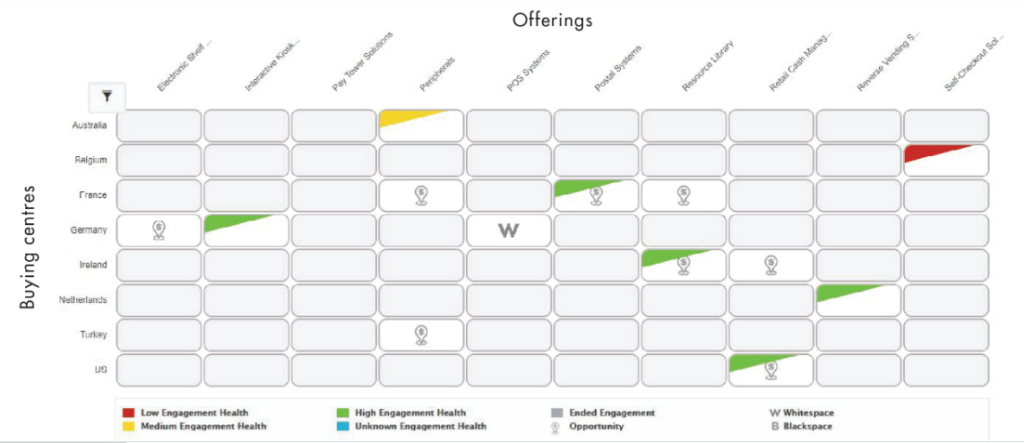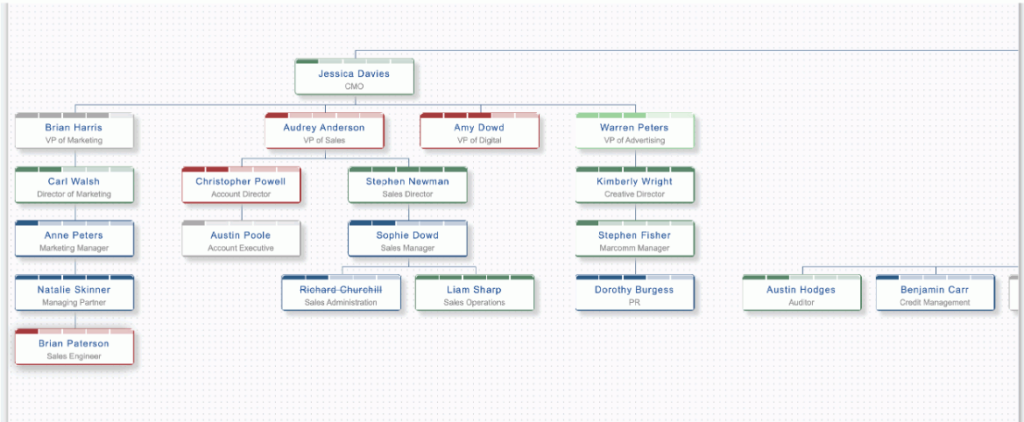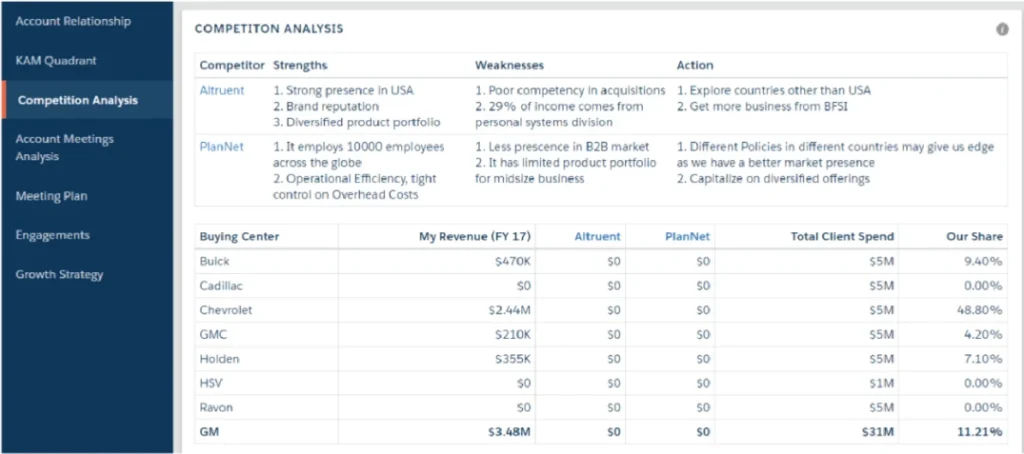Strategic Account Management
Table of Contents
Milind Katti
COO & Co-Founder, DemandFarm
What is Strategic Account Management?
Strategic account management for enterprises (also known as Key Account Management) is a process of building value-driven strategic relationships with your key customers that can help in long-term development and retention, thereby maximizing the revenue potential.
Who is a Strategic Account Manager?
The strategic account manager’s role is to identify those key customers that generate maximum revenue and profitability as compared to other regular accounts. These managers act as a bridge between the company and stakeholders on the customer side. The idea is to increase customer lifecycle value by starting small like with a free trial or test project, adding value, and building trust. this will help your sales manager to come up with powerful sales strategy.
We believe the effectiveness of the strategic account management plan depends upon selecting the account managers with key skills and following the best strategic account management process discussed below.
Strategic Account Management Best Practices & Strategies
Here we list down some best practices that an account manager must adhere to through the process of Strategic Account Planning
1. Know your Strategic Accounts
Identify accounts that contribute a significant amount of revenue to your company, and analyze the loss it would have on your overall revenue if you ever happen to lose the association with the account. If it is really impacting your revenue number and profitability, that account is likely to qualify as a Key Account. Also quantify the relationship health of your key accounts with an account health score, so that you can focus your energies on growing the right accounts.

Mistakes that organizations often make are by focusing on big companies such as Fortune 500, or a cool new start-up. Working with these companies may boost your credibility and reputation, but unless these accounts are profitable enough, and you have a good relationship with the stakeholders, it would be wrong to classify them as Strategic Accounts.
2. White Space Analysis

As a company, you might have different kinds of offerings and your customers have various buying centers spread across departments, locations, etc. As the next step, the strategic accounts identified in step one should be mapped out with their buying vs your offerings and you should ask these key questions:
1. Where are we engaged today?
2. Where are the opportunities?
3. Where are the white spaces of growth?
4. Whether we should focus on Farming or Mining growth?
3. Know the key stakeholders within your Strategic Accounts

Your Strategic Accounts are at a huge risk if your SAM is the single point of contact and owns all the relationships in the account. What if the SAM leaves, and you’ll be left with no choice. That is why you need to have an account plan, to help you identify the right people and strengthen the relationship where it matters the most.
LinkedIn is a great tool to support this activity. If you are connected to your SAM and your SAM is connected to contacts in the account, you will have visibility into these contacts and the ability to link with them. Or, you can opt for the most viable solution by investing in a Key Account Management software, that not only provides visibility into your account plan but also helps to manage and grow your strategic accounts with minimum effort and training. Here are some key questions that need to be answered at this stage:
1. What is the hierarchy in your key account organization?
2. Who are your Champions, Promotors, Distractors, and so on?
3. What is the influence people have on each other?
4. Who controls what budget?
4. Know the communication matrix / activity analytics of your Strategic Accounts

Firstly capture all the meetings between the client stakeholders and the account team. It will show you the communication and interaction patterns over the last 12 months. This meeting matrix gives you visibility on when to plan for a communication strategy for the account. Also, it gives you a year-wise verdict on whether you are in super touch or you need to work more on the volume of meetings. It’s an extremely important exercise to improve your communication strategy to maximize ROI.
5. Know your competition

It’s important to identify the strengths and weaknesses of your competitors. Also, get the analysis of Customer Spend vs Wallet share. Based on the analysis you can better decide your action plan for your strategic account management.
Benefits Of Strategic Account Management
Improved Customer Retention
One of the essential component of strategic account management is improved customer retention. By actively managing and nurturing key accounts, you’re more likely to keep them long-term. This approach emphasizes building strong relationships and understanding current level customers’ needs and goals, fostering trust and loyalty, which reduces the likelihood of them switching to competitors.
Additionally, by identifying potential issues early, you can address them before they escalate. This proactive strategy helps prevent your valuable customer dissatisfaction and ultimately boosts retention rates.
Increased Revenue Opportunities
A significant benefit of strategic account management is the potential for increased revenue opportunities. By actively managing key accounts and understanding their needs, you can uncover chances for cross-selling or upselling.
This boosts revenue from existing customers and strengthens relationships by providing valuable solutions tailored to their needs. Additionally, leveraging strong relationships with these customers may help secure new business through referrals or recommendations within their networks.
Cost Savings
Implementing a strategic account management program can lead to cost savings for your business. By focusing on building strong relationships with key customers, you reduce the risk of losing them due to poor service or dissatisfaction.
This helps you avoid the expenses of acquiring new customers, like marketing and sales costs. Retaining existing customers is generally cheaper than gaining new ones. Additionally, by proactively addressing potential issues, you can prevent costly problems from arising, saving your business time and money in the long run.
Competitive Advantage
Effective strategic account management provides a competitive edge in the marketplace. By understanding your key customers’ needs and goals, you can offer tailored solutions that meet their specific requirements, setting your business apart from competitors with generic offerings.
Additionally, building strong relationships and delivering exceptional customer service helps differentiate your business and create unique value. This advantage can help you stand out in a crowded market and attract new customers.
Key Elements of Successful SAM
Strategic Account Development Plan
One of the most important aspects of Strategic Account Management and leadership is to always look for new opportunities to help grow your client’s business. Insight selling for Strategic Account Management first requires you to leverage the relationships you have already built to understand the problems your client might be facing. You can then cross-sell or up-sell with your skills, or develop a completely new product that caters to your client’s needs.
No doubt, it is difficult to stick to the Strategic Account Management best practices, considering the complexities of these accounts. There are several initiatives in terms of processes, and technologies available to assist you, but not everything is as successful as having a Key Account Management software. Investing in KAM software will help your Strategic Account Managers save time by reducing repetitive tasks, and focus on generating consistent, and stable revenue that will help in long-term growth and success for your company.
Challenges of Enterprise Account Management
Once the managers start practicing the account plans, they realize the real-world problems or rather, challenges that they must conquer for sales effectiveness in strategic account management.
Let’s take a good look at the 7 Big strategic account planning challenges faced while creating.
Where did we get this top-secret information? Straight from the managers themselves and their organizations, of course!
- The eternal tug-of-war between short-term and long-term
- Having access to an effective strategic planning tool
- Having a good relationship with all key customers (other than that one key customer) within each Strategic Account
- Interacting with enterprise-level organizations and key buyers at the top level
- The actual implementation of the Strategic Account Plans
- Formulating a fair and comprehensive compensation policy for Strategic Account Managers
- Training and skills in strategic account management
Key Skills Required to be a successful Strategic Key Account Manager in 2024
1. Leadership Skills:
A strategic account manager is a bridge between the sales team, a team of account managers, and the customer team. He has to lead from the front, take risks and create a win-win for both sides for effective account management. A leader is required to set the right vision for the team and design the strategic plan for customer success. An account manager has to be a good listener, able to understand the needs and desires of the people across the team.
2. Communication Skills:
There are so many moving parts and people involved in a strategic account, that its success is impossible without clear communication. Maintaining transparency within the business ecosystem and coordinating with C-suite executives requires excellent communication skills. SAMs can use org chart software to determine the hierarchy of the account and communicate accordingly with different levels.
3. Long Term Strategy Skills:
It’s important for strategic account managers to subordinate a desire for a quick win for long term success. With SaaS technology companies on the rise the strategy of land and expand is on the rise. The idea is to start small like a free trial, have a foot in the door with the key accounts, and expand your network within the account across departments.
4. Technical Skills:
It’s critical to know about your product and services before you take up the position of strategic account management. It’s important to add value at the right time and the right place to win big deals. You can only value when you are technically equipped with skills pertaining to your offerings.
5. Analytical Skills:
An account manager specializing in key accounts is required to work on various activities like white space analysis that is to understand the relationship health of the key accounts and avoid any setbacks. An analysis is required at every step to take key decisions for real B2B customer success.
Strategic Enterprise Account Managers vs Traditional Account Managers:
Most sales organizations have existing account managers who have skills and are either been trained or are naturally talented in the art of Strategic Account Management platforms. However, there are some big differences between the principles of a Strategic Account Manager and a traditional account manager in many organizations.
Strategic Account Manager plays a key role in a company using SAM processes and techniques. They are the contact people for the Strategic Accounts and are responsible for developing and maintaining a long-term relationships with the key customer.
| Criteria | Strategic Enterprise Account Managers | Traditional Account Managers |
|---|---|---|
| Focus | Long-term relationships with key accounts | Managing a broader range of accounts |
| Sales Approach | Consultative and strategic selling | Transactional selling |
| Customer Interaction | Frequent, in-depth interactions with clients | Regular but less intensive interactions |
| Account Complexity | Handles complex accounts with specific needs | Manages simpler accounts with standard needs |
| Goal | Drive growth and maximize value for key accounts | Achieve sales targets across multiple accounts |
| Skills Required | Strategic thinking, relationship management, negotiation | Sales experience, customer service skills |
| Performance Metrics | Account growth, customer satisfaction, long-term value | Sales volume, customer retention |
That is the reason, why managing Strategic Accounts is not every account manager’s cup of tea. An organization is supposed to have a clear-cut understanding of how it wants to manage its strategic accounts, in order to yield the best results.
Strategic Enterprise Account Managers focus on building deep, lasting beneficial relationships with key clients to drive long-term value, while Traditional Account Managers typically handle a wider range of accounts with a focus on meeting sales targets. Each role plays a crucial part in an organization’s overall sales strategy.
Strategic Account Management Association (SAMA) Certification
The Strategic Account Management Association (SAMA) exposes companies around the globe to tools, methods and processes that enable them to forge closer relationships with their most strategic customers and co-create new sources of sustainable, customer-driven growth. SAMA’s Certified Strategic Account Manager (CSAM) certification is the gold standard of account management. It is recognized and demanded by organizations worldwide.






